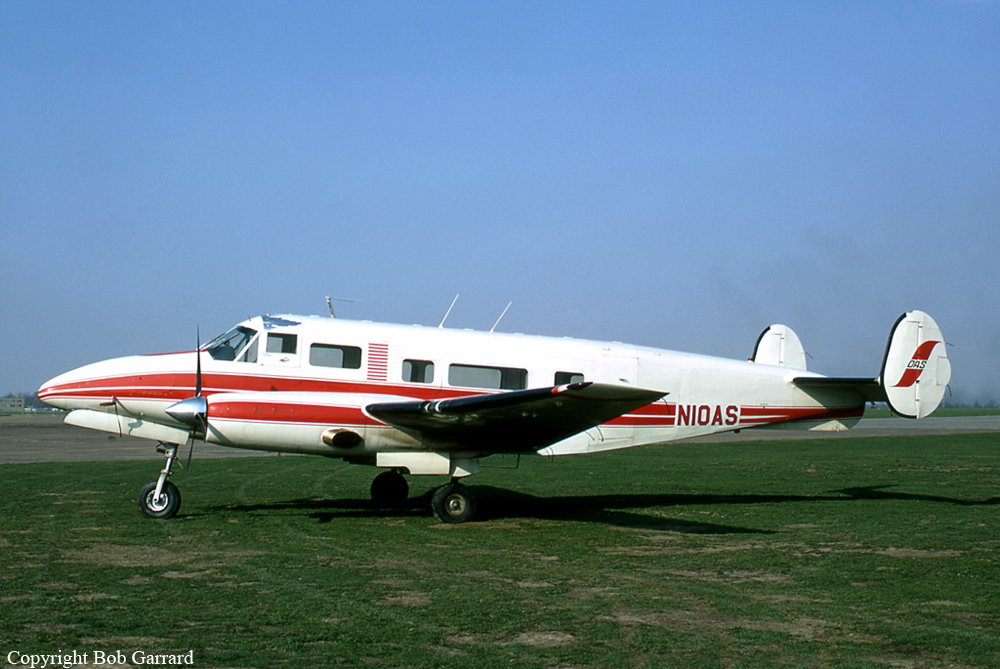Zone
Crash of a Boeing 757-222 in Shanksville: 45 killed
Date & Time:
Sep 11, 2001 at 1030 LT
Registration:
N591UA
Survivors:
No
Schedule:
Newark - San Francisco
MSN:
28142
YOM:
1996
Flight number:
UA093
Crew on board:
7
Crew fatalities:
Pax on board:
38
Pax fatalities:
Other fatalities:
Total fatalities:
45
Aircraft flight hours:
18435
Aircraft flight cycles:
6968
Circumstances:
The Boeing 757 departed Newark Airport at 0847LT on a regular schedule service to San Francisco, carrying 37 passengers and a crew of seven. Few minutes later, the aircraft was hijacked by terrorists who modified the flight path and apparently attempted to fly over Washington DC. At 1030LT, the aircraft crashed in an open field located about 4 km north of Shanksville. The aircraft disintegrated on impact and all 45 occupants were killed. The terrorist attacks of September 11, 2001 are under the jurisdiction of the Federal Bureau of Investigation. The Safety Board provided requested technical assistance to the FBI, and this material generated by the NTSB is under the control of the FBI. The Safety Board does not plan to issue a report or open a public docket.
Probable cause:
The Safety Board did not determine the probable cause and does not plan to issue a report or open a public docket. The terrorist attacks of September 11, 2001 are under the jurisdiction of the Federal Bureau of Investigation. The Safety Board provided requested technical assistance to the FBI, and any material generated by the NTSB is under the control of the FBI.
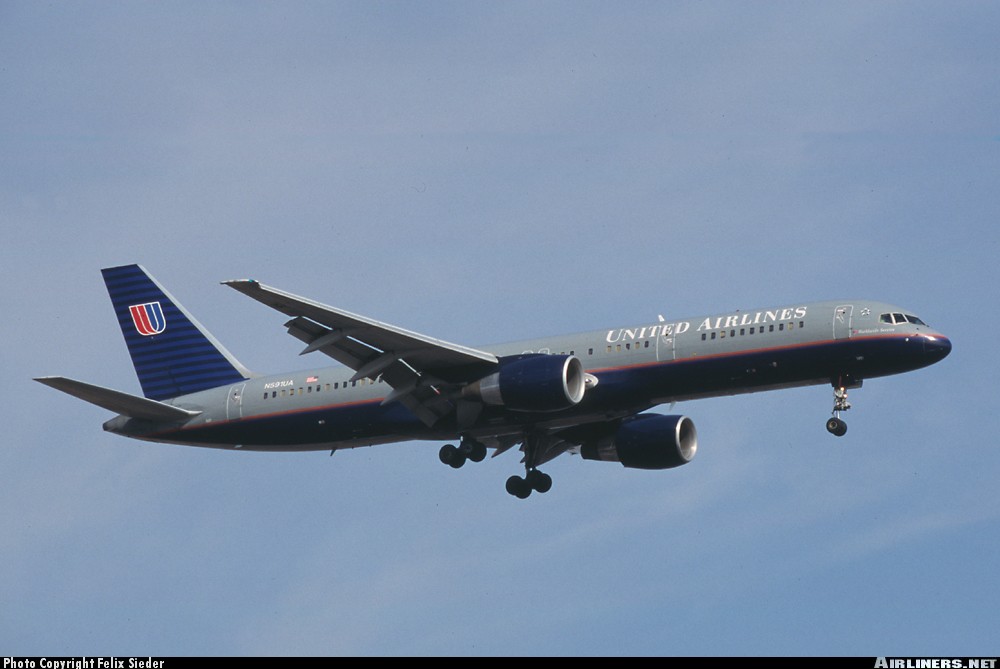

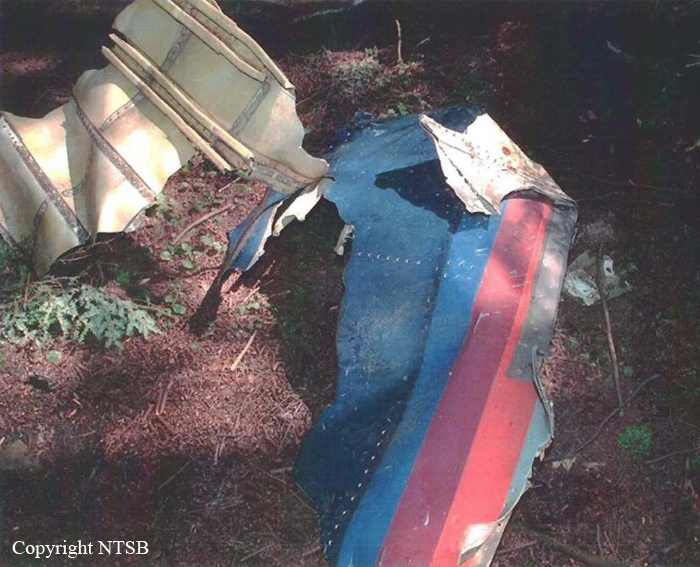

Ground accident of a McDonnell Douglas MD-81 in Newark
Date & Time:
Jun 14, 2000 at 1700 LT
Registration:
N16884
Survivors:
Yes
Schedule:
Newark - Detroit
MSN:
48074
YOM:
1981
Flight number:
CO481
Crew on board:
1
Crew fatalities:
Pax on board:
6
Pax fatalities:
Other fatalities:
Total fatalities:
0
Aircraft flight hours:
45834
Aircraft flight cycles:
36189
Circumstances:
The aircraft was parked at gate C115 awaiting for passengers on a flight (service CO481) from Newark to Detroit-Wayne County Airport. In unclear circumstances, a pilot attempted to make an engine run test while six employees were cleaning the cabin. The aircraft moved forward and collided with the main terminal, suffering major structural damages. There were no injuries among the seven occupants while the aircraft was damaged beyond repair.
Probable cause:
No investigations were conducted by NTSB on this event.
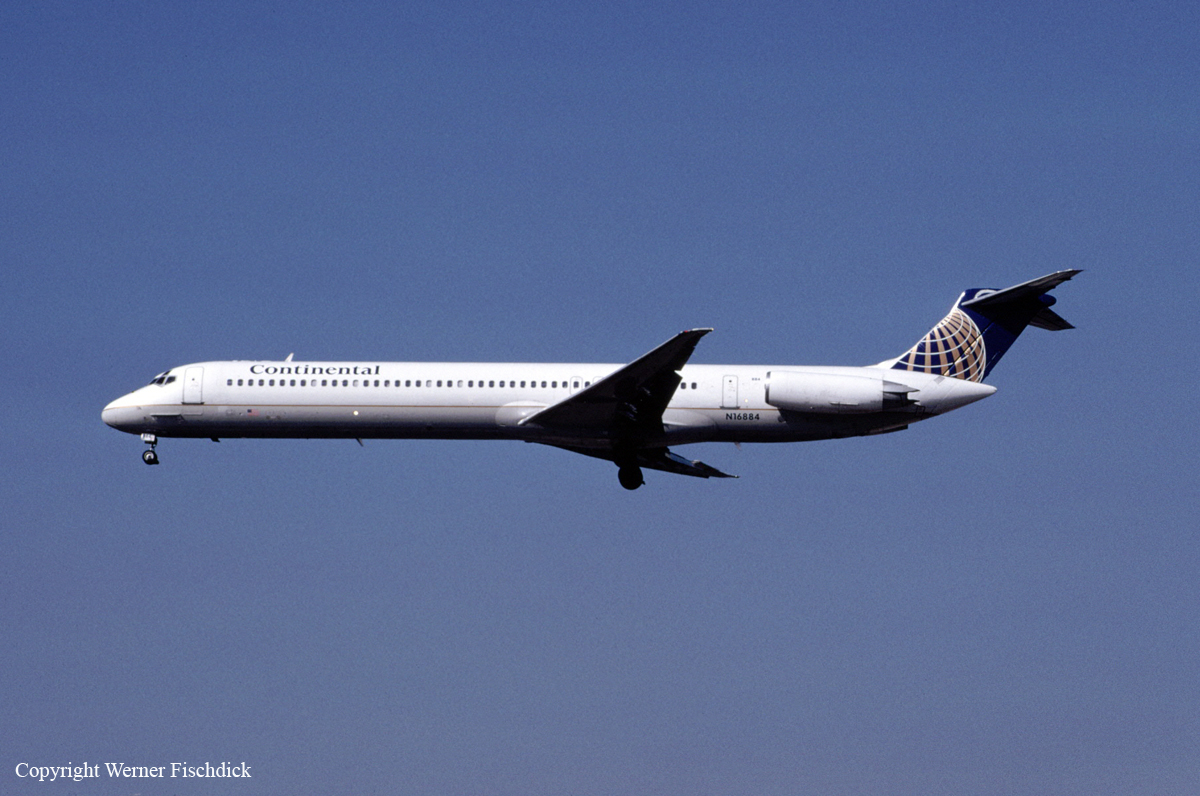
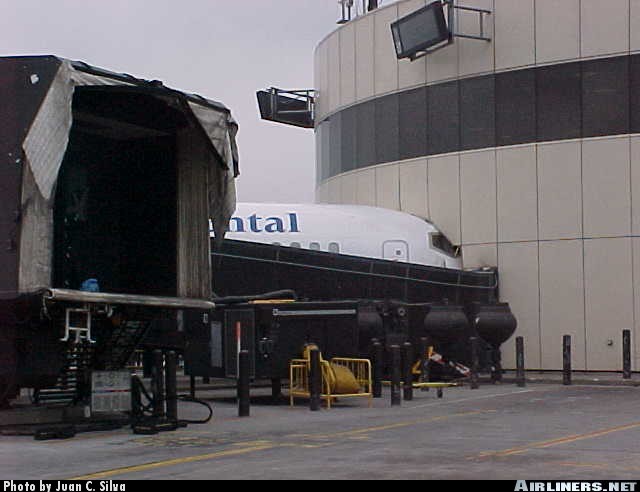
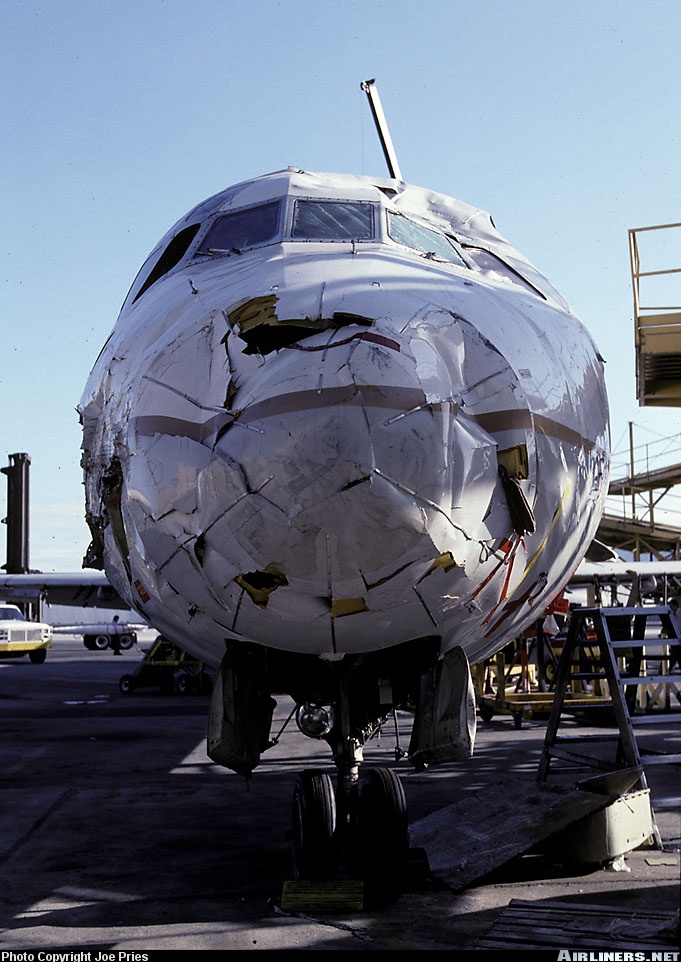
Crash of a McDonnell Douglas MD-11F in Newark
Date & Time:
Jul 31, 1997 at 0131 LT
Registration:
N611FE
Survivors:
Yes
Schedule:
Singapore – Penang – Taipei – Anchorage – Newark
MSN:
48604
YOM:
1993
Flight number:
FDX014
Crew on board:
3
Crew fatalities:
Pax on board:
2
Pax fatalities:
Other fatalities:
Total fatalities:
0
Captain / Total hours on type:
1253.00
Copilot / Total hours on type:
95
Aircraft flight hours:
13034
Aircraft flight cycles:
2950
Circumstances:
The aircraft crashed while landing on runway 22R at Newark International Airport (EWR), Newark, New Jersey. The regularly scheduled cargo flight originated in Singapore on July 30 with intermediate stops in Penang, Malaysia; Taipei, Taiwan; and Anchorage, Alaska. The flight from Anchorage International Airport (ANC), Anchorage, Alaska, to EWR was conducted on an instrument flight rules flight plan and operated under provisions of 14 Code of Federal Regulations (CFR) Part 121. On board were the captain and first officer, who had taken over the flight in Anchorage for the final leg to EWR, one jumpseat passenger, and two cabin passengers. All five occupants received minor injuries in the crash and during subsequent egress through a cockpit window. The airplane was destroyed by impact and a post crash fire. According to flight plan and release documents, the airplane was dispatched to ANC with the No. 1 (left engine) thrust reverser inoperative. The flight plan time from ANC to EWR was 5 hours and 51 minutes—47 minutes shorter than the scheduled time of 6 hours and 38 minutes because of 45-knot tailwinds en route. The flight crew stated that at flight level (FL) 330 (about 33,000 feet mean sea level [msl]), the flight from ANC to EWR was routine and uneventful. At 0102:11, a Federal Aviation Administration (FAA) Boston Air Route Traffic Control Center air traffic controller instructed flight 14 to descend and maintain FL180, according to the airplane’s cockpit voice recorder (CVR). About 0103, the captain and first officer discussed the approach and landing to runway 22R and the airplane’s landing performance. Using the airport performance laptop computer (APLC), the first officer determined that the airplane’s runway stopping distance would be approximately 6,080 feet using medium (MED) autobrakes. According to the CVR, at 0103:33, the flight crew then compared the APLC approximate landing distance for MED braking (6,080 feet) to the after-glideslope touchdown distance (6,860 feet) provided on the instrument approach plate. Based on the flight crew's calculation (6,860 – 6,080), MED braking provided a 780-foot margin after stopping. The flight crew then compared the APLC approximate landing distance for maximum (MAX) braking (5,030 feet) to the same 6,860-foot after-glideslope touchdown distance provided on the instrument approach plate. Based on the flight crew's calculation (6,860 – 5,030), MAX braking provided a 1,830-foot margin after stopping. On the basis of these calculations, the first officer suggested using MAX autobrakes. The captain agreed, stating “we got a lot of stuff going against us here so we’ll…start with max.” The first officer added, “I mean…I mean if we don’t have the reverser.” At 0114:22, the captain asked the first officer to advise the passengers that “we’re gonna have a pretty abrupt stop because of those brakes and the thrust reversers and all that stuff.” Twice during the approach, the captain asked the first officer to remind him to only use the No. 2 and No. 3 thrust reversers. At 0116:16, the captain noted that the left landing light was inoperative, adding “… just the right’s working.” The EWR tower controller cleared flight 14 to land at 0129:45 and advised the flight crew “winds two five zero at five.” At 0130:02, the first officer stated “max brakes” during the before-landing checklist. The captain replied “max brakes will be fine,” and the first officer responded “if they work.” At 0130:34, the captain stated “[landing gear] down in four green” and called for “flaps fifty.” At 0130:45, the captain disengaged the autopilot at an altitude of 1,200 feet during the approach and “hand flew” the airplane to touchdown. The autothrottles were engaged, as recommended by McDonnell Douglas and FedEx procedures. According to information from the airplane’s flight data recorder (FDR), the approach was flown on the glideslope and localizer until touchdown, and the airplane’s approach airspeed was about 158 knots until the flare. According to the CVR, the pilots had selected an approach reference speed of 157 knots, or Vref plus 5 knots. Altitude callouts were made by the on board central aural warning system (CAWS) at 1,000 feet and 500 feet, and the first officer called out minimums (211 feet) at 0132:03. At 0132:09, the first officer stated “brakes on max,” and CAWS callouts followed for 100, 50, 40, 30, 20, and 10 feet until the sound of initial touchdown at 0132:18.75. One-half second later, the CVR recorded an expletive by the captain. At 0132:20.26, the CVR recorded increasing high-frequency tones consistent with engine spool-up (accelerating engine rpms), and at 0132:21.06, the CVR recorded a decrease in high-frequency tones consistent with engine spool-down. The sound of a “loud thump” consistent with another touchdown was recorded at 0132:21.62. A series of expletives by the captain and first officer followed until sounds of “metallic breakup” were recorded at 0132:27. FDR data indicated that after the airplane’s initial touchdown, it became airborne and rolled to the right as it touched down again (see section 1.1.1 for a detailed description of the airplane’s performance during the landing sequence). The airplane continued to roll as it slid down the runway, coming to rest inverted about 5,126 feet beyond the runway threshold and about 580 feet to the right of the runway centerline. The accident occurred during the hours of darkness. Visual meteorological conditions prevailed at the time of the accident.
Probable cause:
The captain’s overcontrol of the airplane during the landing and his failure to execute a go-around from a destabilized flare. Contributing to the accident was the captain’s concern with touching down early to ensure adequate stopping distance.
Final Report:



Crash of a Boeing 727-227 in Newark
Date & Time:
Jun 7, 1997
Registration:
N571PE
Survivors:
Yes
MSN:
21264
YOM:
1976
Crew on board:
2
Crew fatalities:
Pax on board:
0
Pax fatalities:
Other fatalities:
Total fatalities:
0
Circumstances:
The aircraft was transferred from the maintenance facilities to the main terminal by a technical crew when control was lost. The airplane collided with the USAir Terminal and the cockpit was destroyed.
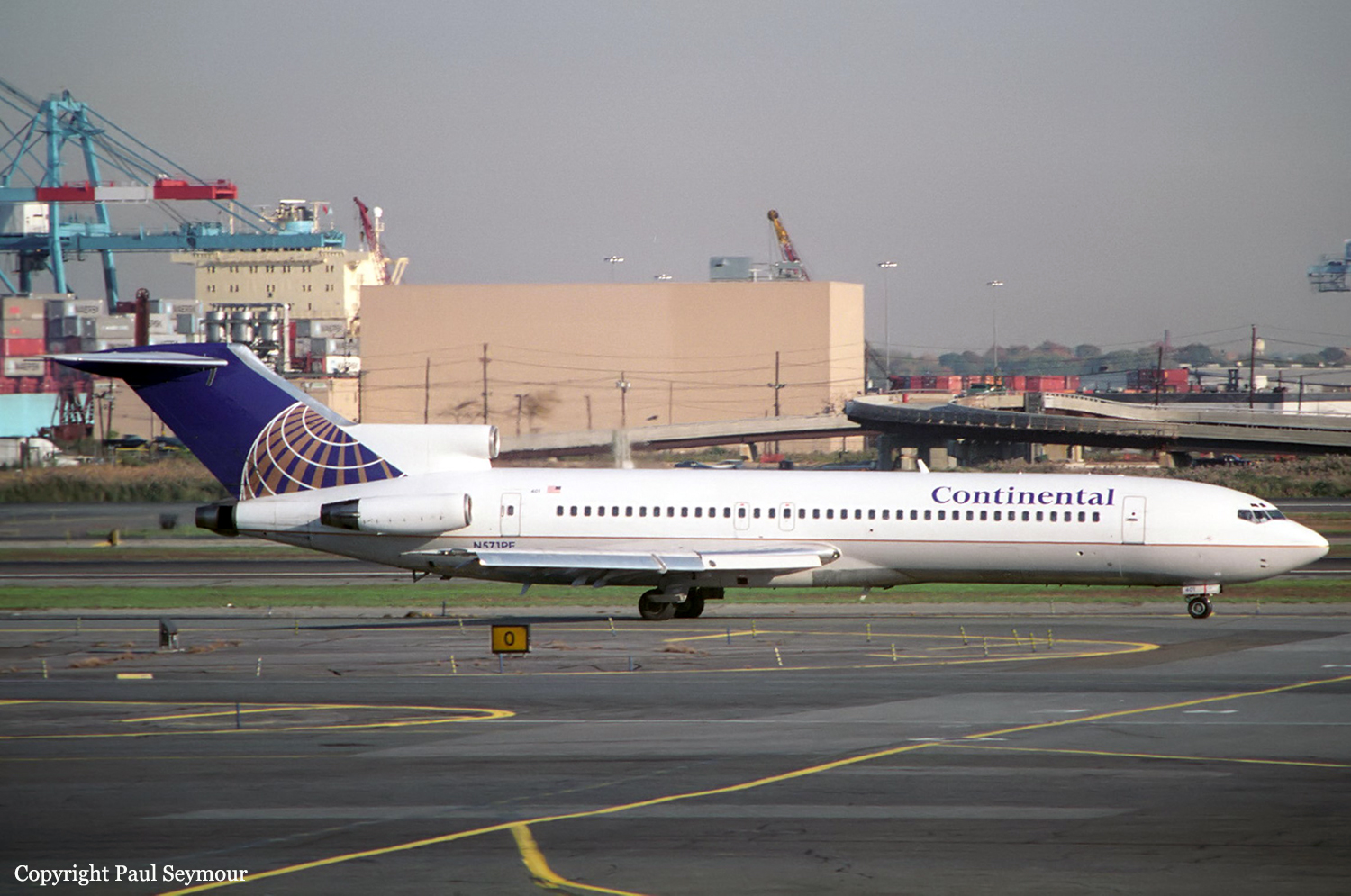

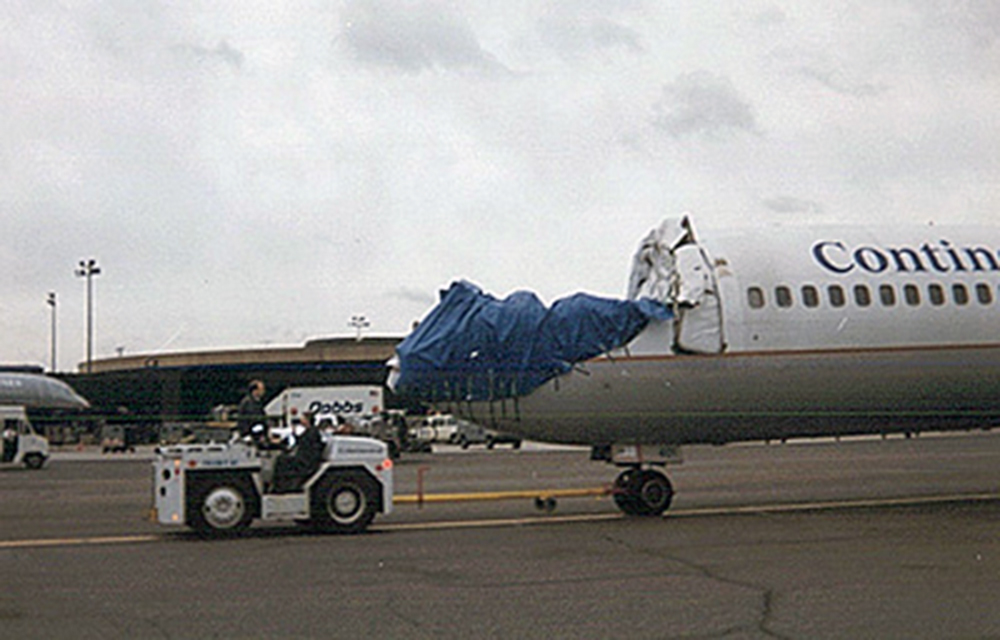
Crash of a Swearingen SA226TC Metro II in Washington-Dulles
Date & Time:
Dec 18, 1987 at 1936 LT
Registration:
N23AZ
Survivors:
Yes
Schedule:
Newark - Washington DC
MSN:
TC-260
YOM:
1978
Crew on board:
2
Crew fatalities:
Pax on board:
6
Pax fatalities:
Other fatalities:
Total fatalities:
0
Captain / Total hours on type:
400.00
Aircraft flight hours:
12820
Circumstances:
The aircraft had descended through a cloud layer enroute for the scheduled landing at IAD and according to the crew had picked up some trace rime ice on its wing surfaces. Although pitot and sas (stall avoidance system) heat were used the captain elected not to use engine inlet anti-ice. Just inside the outer marker the left engine lost power followed shortly by the right engine. The captain was able to set the aircraft down in an open field where the gear collapsed during the landing roll. The engines were successfully run-up at the Garrett facility. The flight manual contains a warning and a note stating that engine heat and continuous ignition must be used after leaving icing conditions until the pilot is confident that any significant residual ice will not be ingested into the engines. Ice was found lying beneath the right wing which matched the curvature of the leading edge of the wing. A round conical shaped piece of ice was found along the wreckage path which matched the nose of the propeller spinner.
Probable cause:
Occurrence #1: loss of engine power (total) - nonmechanical
Phase of operation: approach - faf/outer marker to threshold (ifr)
Findings
1. All engines
2. (f) weather condition - icing conditions
3. (c) in-flight planning/decision - improper - pilot in command
4. (c) anti-ice/deice system - not used - pilot in command
5. (c) inadequate initial training - check pilot
6. (c) inadequate certification/approval, airman - company/operator mgmt
7. (f) wing, skin - ice
----------
----------
Occurrence #3: gear collapsed
Phase of operation: landing - flare/touchdown
Findings
8. (f) terrain condition - open field
9. (f) terrain condition - downhill
10. (f) light condition - dark night
Phase of operation: approach - faf/outer marker to threshold (ifr)
Findings
1. All engines
2. (f) weather condition - icing conditions
3. (c) in-flight planning/decision - improper - pilot in command
4. (c) anti-ice/deice system - not used - pilot in command
5. (c) inadequate initial training - check pilot
6. (c) inadequate certification/approval, airman - company/operator mgmt
7. (f) wing, skin - ice
----------
----------
Occurrence #3: gear collapsed
Phase of operation: landing - flare/touchdown
Findings
8. (f) terrain condition - open field
9. (f) terrain condition - downhill
10. (f) light condition - dark night
Final Report:
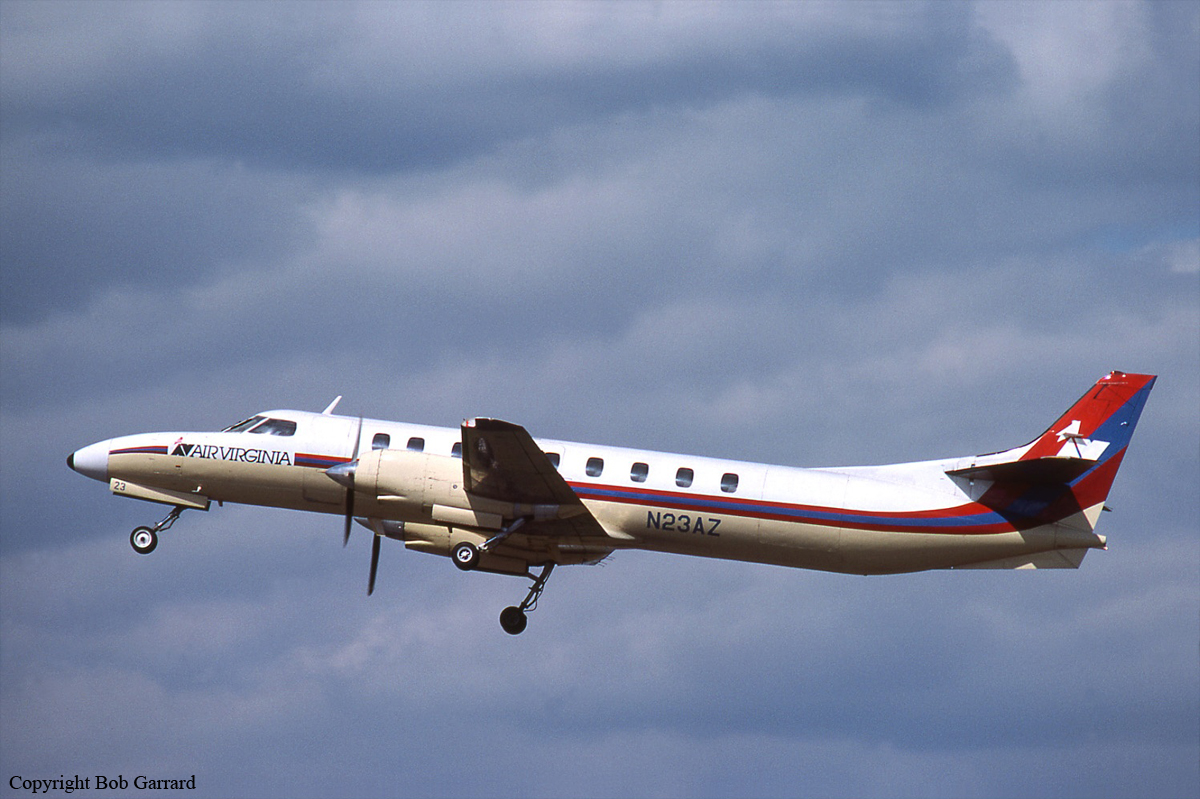
Crash of a Volpar Turboliner 18 in Saint Clair Shores
Date & Time:
Nov 19, 1987 at 1725 LT
Registration:
N10AS
Survivors:
Yes
Schedule:
Newark - Detroit
MSN:
N-467
YOM:
1950
Crew on board:
1
Crew fatalities:
Pax on board:
0
Pax fatalities:
Other fatalities:
Total fatalities:
0
Captain / Total hours on type:
80.00
Aircraft flight hours:
15800
Circumstances:
While enroute to home base after delivery of revenue cargo, the pilot experienced a total loss of engine power in both engines due to fuel exhaustion. The pilot performed emergency procedures and set the aircraft up for a forced landing in a grassy field on the edge of a lake. The aircraft initially impacted a tree and the rocky berm of the shoreline. The contact with the berm caused the landing gear to break off, the aircraft swerved around and skidded backwards before coming to a rest about 150 feet from the lakeshore. Post accident investigation revealed less than 2 gallons of fuel in each wing tank.
Probable cause:
Occurrence #1: loss of engine power (total) - nonmechanical
Phase of operation: descent
Findings
1. (c) fluid, fuel - exhaustion
2. Engine instruments, fuel quantity gage - incorrect
3. Inattentive - pilot in command
4. (c) planning/decision - poor - pilot in command
----------
Occurrence #2: forced landing
Phase of operation: descent - emergency
----------
Occurrence #3: in flight collision with terrain/water
Phase of operation: descent - emergency
Findings
5. Object - tree(s)
6. Terrain condition - berm
7. Terrain condition - rough/uneven
8. Landing gear - collapsed
Phase of operation: descent
Findings
1. (c) fluid, fuel - exhaustion
2. Engine instruments, fuel quantity gage - incorrect
3. Inattentive - pilot in command
4. (c) planning/decision - poor - pilot in command
----------
Occurrence #2: forced landing
Phase of operation: descent - emergency
----------
Occurrence #3: in flight collision with terrain/water
Phase of operation: descent - emergency
Findings
5. Object - tree(s)
6. Terrain condition - berm
7. Terrain condition - rough/uneven
8. Landing gear - collapsed
Final Report:
